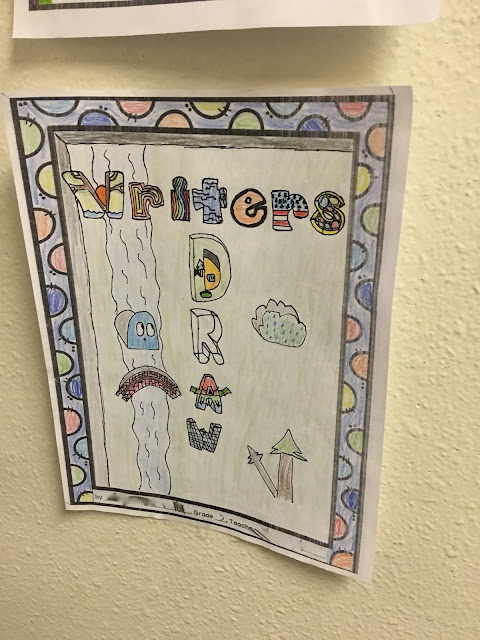In a previous
post, I discussed the inspiration for this year's library theme, "What Writers Do." Certainly, it isn't something that is typically a focus in a library, but I'm finding that looking at books through the lens of the authors is a very enriching experience (for me and for the kids).
Here's what we've done so far:
To begin the theme, I read
Library Mouse by Daniel Kirk. This picture book set the stage for the year. In the book, the mouse (who lives in the library) becomes an author, and then inspires the students to become authors, as well.
Next, I had my 3rd, 4th and 5th graders make posters for me illustrating their ideas about "What Writers Do." I particularly love this one, submitted by a 5th grader.
I displayed the students' poster in the hallways, and then bound them into two big books that we keep in the library.
As the year has progressed, my library lessons have continued to come back to theme, as they will do throughout the year. For example, when discussing the difference between fiction and non-fiction books, we discussed the authors' purposes in writing books.
I've been using mentor texts to "unpack" what writers do. I read
The Little Shop of Monsters, by Marc Brown and R.L. Stine, and the students pointed out how they "heard" R.L. Stine in the text. That led to a discussion of author's voice.
I wanted to enlist the aid of the classroom teachers in our theme, so I led an in-service about using mentor texts to facilitate writing.
We have a very accomplished, seasoned staff, and they have been using children's literature for years to facilitate writing, but most were not familiar with the current term, "mentor text." They completely understood what I was talking about, though, as I explained how I've been using books such as Library Mouse and The Little Shop of Monsters (thus the monster theme in the slides below).
I particularly liked this
video by Peggy Semingson for giving a quick, succinct explanation of what mentor texts are.
The "why" is always an important one for me, and what resonated most strongly with me was the idea that we "show, don't tell" kids about what writers do.
I love the idea of letting what kids notice in mentor texts guide writing lessons, rather than subscribing to a preconceived plan of what we are going to teach. This is something I've been trying to do more of in my own teaching...I'm sure it has a name, but I'm calling it "responsive teaching." Dr. Jane Hanson of the University of Virginia discussed how to follow the students' lead in this
video by Reading Rockets.
After my presentation, teachers got together by grade level to plan how they can use mentor texts (or how they are already using them) in their writing instruction. It was so exciting to hear their plans! (I work with a talented group!)
I'd love to hear how other teachers and librarians are using mentor texts!
Special thanks to Laura Strickland of Whimsy Clips for the adorable monster clip art.





















































